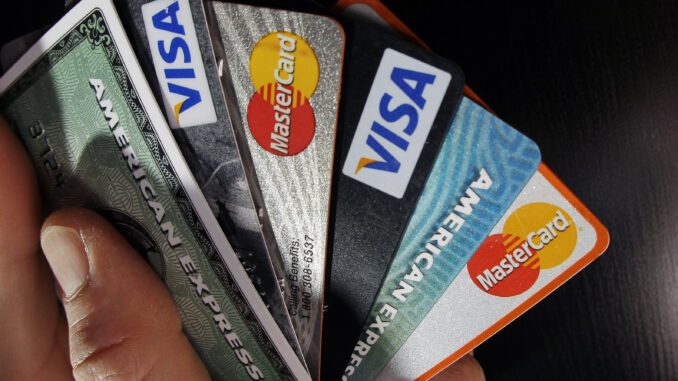
Your budget isn’t the only avenue to free up money as prices continue to rise due to inflation. The credit cards in your wallet may be packing some valuable perks and potential breathing room to cover large purchases. With introductory offers, rewards, perks and benefits, you can potentially choose from different options to meet your goals of paying down debt or covering the costs of some purchases. Get to know how these options work and how you can use them to get the most value on your expenses.
As prices on goods and services continue to rise because of inflation, scaling back expenses isn’t the only way to free up cash to cover essentials.
Credit cards can feature valuable perks for new applicants, whether your goal is to pay off debt or save on costs. Even if you already have a card, you may be sitting on targeted offers, rewards or benefits that could make a difference.
Here are some ways to maximize value from a credit card.
- INTRODUCTORY OFFERS
If you’ve got good credit (a FICO score of 690 or higher) and a big expense coming up, consider financing it with a credit card that offers a 0% intro annual percentage rate on purchases and a sign-up bonus. As long as you pay off the balance, you’ll save on interest charges and potentially recoup some of the cost of the purchase with that bonus.
If you have good credit but want to pay off existing debt, a balance transfer credit card may lower costs. It allows you to transfer high-interest debt from another issuer and pay it off at a lower interest rate — ideally at a 0% APR for a period of time.
“There is going to be a (balance transfer) fee, so you have to shop around a lot of times,” says Melissa Cox, a certified financial planner and advisor at Fetterman Investments, a Dallas-based financial planning firm.
Aim for a fee of 3% of the transferred balance or lower. Compare that fee with the cost of long-term interest payments on your current card to determine which option saves more money. If the balance transfer makes sense, make a plan for it.
“If you know that the transfer is going to be six months before the interest starts kicking in, you want to have a plan to get as much of that debt paid off in that six months,” Cox says.
You can typically find promotional periods for balance transfers that run under two years. And you may not need to apply for a new credit card to get such a deal; some card issuers provide targeted balance transfer offers to existing cardholders.
- BUY NOW, PAY LATER OPTIONS
Some major issuers have built-in “buy now, pay later” options on their credit cards that let you pay off eligible purchases in installments for a fixed fee or interest rate.
The predictability of these types of payments can make it easier to budget for them, and such plans could save you money if their fee or interest rate is cheaper than your card’s normal APR. The plans don’t require a credit check, and you can generally still earn rewards on purchases if the card offers them.
- REWARDS ON PURCHASES
A credit card that offers a rewards rate of 2% back on all purchases — or 3% or more back in specific categories — can help lessen the pain of rising prices.
For instance, let’s say you spend $500 a month at the supermarket. A credit card that earns 5% back on groceries could net you $25 back in rewards each billing cycle. Over the course of a year, that adds up.
If your current credit card falls short on rewards for frequent spending categories like gas, dining out or groceries, consider one that better aligns with your spending.
- MERCHANT-SPECIFIC DISCOUNTS
Some major credit card issuers offer discounts or rebates when you use a credit card to shop with specific merchants in categories like everyday purchases, gifts and travel. These one-time offers may be found in your account or email, and you normally have to “activate” them or add them to your card.
You’ll snag more value if the eligible credit card also earns rewards on the purchase.
- BENEFITS
Money-saving benefits like cell phone insurance may be sitting in your wallet. You can get coverage for damaged or stolen devices up to a maximum amount when you use cards with this benefit to pay the monthly bill. There’s typically a small deductible, and terms usually apply.
For Tony Florida — the primary account holder of his family cell phone plan — the savings from his credit card’s cell phone protection benefit add up. If he were paying his cell phone provider for protection, it could cost $14 or more per device monthly. Cell phone repairs could also be pricey. When his sister dropped her phone and broke it, he filed a claim using the benefit on his card, paid the deductible and got reimbursed.
“They just gave me a statement credit for the estimated cost of the phone,” says Florida, who’s also a content creator of the YouTube channel Thrifty Tony. “It was like over $500 that they reimbursed us for.”
The claims process is a bit clunky, according to Florida, but he says it’s still worth it since you’re not paying extra money for this benefit.
If your card lacks this perk, it may have others. For instance, you might have price protection, which refunds the difference in price of an item found advertised at a lower price elsewhere. To find out which benefits your credit card offers, contact the issuer or log in to your account.



